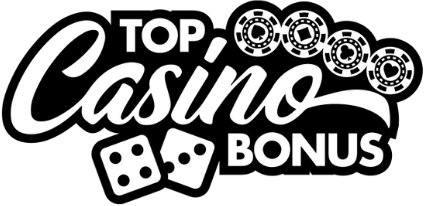How to play roulette: a beginner’s illustrated guide
Roulette isn’t just a wheel and some chips. It’s rhythm, instinct, and understanding the underlying mechanics as surely as a clockmaker knows every gear. Over the decades, I’ve watched folks chase the wheel like a dog chasing its tail, no plan, no method, just hope. That won’t cut it. If you’re serious about learning roulette the right way, it begins with mastering the fundamentals, from layout to bets to strategy, like memorizing the parts of a well-oiled machine.
Table of contents
Understanding the layout: more than just numbers on a felt table
At first glance, a roulette layout looks like a cluttered mat of numbers and colors. But it’s not chaos, it’s precision. You’ve got 36 numbers, half red and half black, plus the little green devil: 0 in European or 0 and 00 in American versions. That tiny difference, single zero vs. double zero, is a game changer. Always go European when you can. The house edge is 2.7% instead of 5.26% in American roulette. That’s not just a statistic. It’s the difference between steady attrition and a fighting chance.
Inside bets versus outside bets
Newcomers often assume all bets are created equal. They’re not. Inside bets, straight-up numbers, splits, streets, pay big, but hit rare. It’s like threading a needle at ten paces. Outside bets, red/black, odd/even, are steadier, like laying bricks. They pay less, sure, but they build momentum. Know when you’re swinging for the fences and when you’re paving solid ground.
The roulette wheel: learn its language
Each wheel tells a story. Lower-end online versions? They’re noiseless, almost sterile, like reading a book with no pages. But seasoned eyes will notice variation: how real wheels weight around zero, rotor speeds, ball material. Not every spin is the same, and in the right conditions, patterns emerge. Don’t mistake that for magic. It’s physics meeting repetition.
Mechanical quirks and dealer signatures
In land-based play, dealer bias was once a rich vein for the observant player. One shift I remember in Monte Carlo, a dealer consistently landed near numbers like 17 and 20. Too consistent to be coincidence. These days, slick auto-roulette wheels and digital RNGs make that tougher. Still, when you’re online with studios powered by Evolution Gaming, you’re getting a mix of live and tech, which keeps play authentic, and readable if you know the cues.
Betting systems: use them, don’t believe in them
Martingale, Fibonacci, Labouchere, they sound clever. And they are. But they’re not alchemy. These are money management tactics, not magic bullets. Take Martingale: double your bet after a loss. Works until it doesn’t, and you hit a table limit or blow your entire stack. Real play isn’t about recouping losses. It’s about knowing when the table’s cold and walking away, or hot, and pressing with discipline.
Building your own strategy
A real player creates a personalized hybrid approach. Maybe you start with outside bets to get a read on the table’s rhythm, then introduce neighbor bets or call bets (voisins, tiers, orphelins) once you’re comfortable. Tools like what IGT provides in their online interfaces give the flexibility to customize bet structures quickly and easily, adapting with every spin. Use these features to simulate scenarios, not to gamble blindly.
Practicing smart: bankroll and mindset management
Too many new players treat bankroll like a gas tank, fill it, drive until it’s empty. Wrong. Think of it like an engine temperature gauge; you never want the needle running too hot. Recognize the signs of overexposure. Set a per-session limit. If your daily roll is $200, don’t bring all of it to the table at once. Divide it. Pace it.
Free training tools
You don’t sharpen a blade on bone. You practice on softer targets. Roulette’s no different. Train for free, learn patterns, test ideas. That’s how champions are built. The same philosophy applies when learning other games, as seen in this guide to practicing blackjack for free. The workshop matters. Get your reps in without bleeding chips.
Selecting where and how to play: not all wheels are equal
Online roulette’s exploded, with software depth varying like the grain in wood. Providers like Merkur Gaming often recreate classic European wheels, while others add modern tweaks. Software isn’t just about feel, it’s about accuracy of spin timing, clarity in statistics, and responsiveness. You’re not picking a casino; you’re picking the tools of your craft.
Game volatility and platform stability
I’ve seen platforms freeze just as a ball lands, nothing more jarring. Low latency, high fidelity, that’s what separates a stroll through the park from a jank-fest horror ride. Pick a provider with a track record. Habanero games, for instance, maintain cross-device consistency with a user interface that speaks your language, not just visually but tactically.
Recognizing the flow: when to push, when to retreat
There’s a tempo to roulette. After thousands of spins, you learn it. If the wheel’s bouncing erratically, or you’re five losses deep on similar numbers, step away. Patience is a weapon. I once watched a novice lose 22 straight spins chasing red. The odds? Ludicrous. But the greed, or fear, kept him glued. Never sacrifice logic to emotion. That’s how the wheel chews you up.
Final thoughts: it’s not just spinning a ball, it’s playing the music of chance
Roulette’s a symphony, rhythm, chance, restraint. The amateurs see randomness. The seasoned eye sees structure, even in uncertainty. Memorize the wheel order, study sector betting, and use tools as artisans use chisels and mallets. The old skills remain sharp, even in a digital age. Never forget: the game doesn’t owe you anything, but respect it enough, and it might just tip its hat your way.





0 Comments